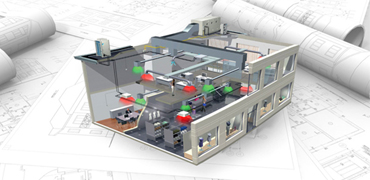
Software for Selecting VRV Air Conditioning Systems
This article explores software solutions for selecting VRV air conditioning systems from leading manufacturers.
Daikin VRV System Selection Software
As an industry leader, Daikin offers several advanced software tools for designing and selecting VRV systems.
-
VRV Xpress – A comprehensive design tool that enables engineers to create detailed VRV system layouts.
-
VRV Water Cooled Xpress – A specialized program for water-cooled VRV systems, allowing precise system design, refrigerant pipeline distribution, and load calculations.
-
VRV Pro Quick Mode – This tool requires minimal input data about the building to generate a preliminary design for refrigerant pipelines and indoor unit placement.
-
VRV PRO 5.1 – An advanced tool that performs highly accurate load calculations based on detailed building data, including floor area and energy consumption estimates.
-
VRV Xpress Budgeting – This software assists in selecting indoor and outdoor units, calculating refrigerant pipelines, and estimating the cost of installation. It allows exporting results to AutoCAD, Excel, and Word.
Daikin Europe Academy also provides training courses for working with VRV Pro, granting a renewable one-year license upon completion.
Mitsubishi Electric VRV Selection Software
Mitsubishi Electric offers City Multi Design Tool ver. 4.00, which:
-
Calculates copper pipe diameters and refnet distributors.
-
Checks system performance based on pipeline length and height differences.
-
Generates reports in Excel and AutoCAD.
-
Features a Russian-language interface.
Toshiba VRV Selection Software
Toshiba provides Toshiba Selection Tool and mini-SMMS for VRV system design. Additionally, Super Heat Recovery (SHRM) and DynaDoctor allow advanced diagnostics and troubleshooting of VRV systems.
Toshiba’s software is optimized for Windows XP and Vista, making VRV system design more accessible for engineers.
Key Considerations in VRV System Installation
After system design, proper installation is critical. Key steps include:
-
Correct electrical connections to assign addresses to all indoor units.
-
Professional installation of copper piping and refnet distributors.
-
Pressure testing the system with nitrogen to ensure leak-tightness.
-
Using a drying filter on the liquid line to remove moisture.
Proper selection and installation of VRV systems using specialized software ensure optimal performance, energy efficiency, and long-term reliability.
